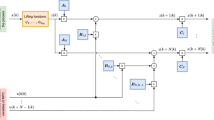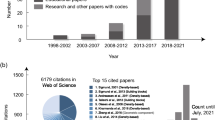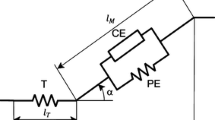Abstract
This work presents a methodological framework, based on an indirect approach, for the automatic generation and numerical solution of Optimal Control Problems (OCP) for mechatronic systems, described by a system of Differential Algebraic Equations (DAEs). The equations of the necessary condition for optimality were derived exploiting the DAEs structure, according to the Calculus of Variation Theory. A collection of symbolic procedures was developed within general-purpose Computer Algebra Software. Those procedures are general and make it possible to generate both OCP equations and their jacobians, once any DAE mathematical model, objective function, boundary conditions and constraints are given. Particular attention has been given to the correct definition of the boundary conditions especially for models described with set of dependent coordinates. The non-linear symbolic equations, their jacobians with the sparsity patterns, generated by the procedures above mentioned, are translated into a C++ source code. A numerical code, based on a Newton Affine Invariant scheme, was also developed to solve the Boundary Value Problems (BVPs) generated by such procedures. The software and methodological framework here presented were successfully applied to the solution of the minimum-lap time problem of a racing motorcycle.
Similar content being viewed by others
References
Cervantes, L. and Biegler, L.T., ‘Optimization strategies for dynamic systems’, in Encyclopedia of Optimization, Vol. 4, Floudas, C. and Pardalos, P. (eds.), Kluwer, 2001, pp. 216–227.
Sargent, R.W.H., ‘Optimal control’, Journal of Computer Application and Mathematics 124, 2000, 361–371.
Bertolazzi, E., Biral, F. and Da Lio, M., ‘Symbolic–numeric efficient solution of optimal control problems for multibody systems’, Journal of Computational Methods in Science and Engineering (submitted), Collana Scientifica DIMS 22, 2003, 1–19.
Gill, P.E., Murray, W. and Saunders, M.A., ‘SNOPT: an SQP algorithm for large-scale constrained optimization’, SIAM Journal of Optimisation 12, 2002, 979–1006.
Serbant, R. and Petzold, L.R., ‘COOPT—A ‘software package for optimal control of largescale differential-algebraic equation systems’, Mathematics Computer Simulation 56, 2001, 187–203,
Bulirsch, R., Nerz, E., Pesch, H.J. and von Stryk, O., ‘Combining direct and indirect methods in optimal control: Range maximization of a hang glider’, in: Optimal control (Freiburg 1991), International Series in Numerical Matematics, Birkhäuser 111, 1993, 273–288.
Troutman, J.L., Variational Calculus and Optimal Control, Undergraduate Texts in Mathematics, 2nd edn., Springer-Verlag, New York, 1996.
Fabien, B.C., ‘Numerical solution of constrained optimal control problems with parameters’, Applied Mathematics and Computation 80, 1996, 43–62.
Garcia de Jalon, J. and Bayo, E., Kinematic and Dynamic Simulation of Multibody Systems. The Real Time Challenge, Mechanical Engineering Series, Springer-Verlag, 1994.
Deuflhard, P. and Heindl, G., ‘Affine invariant convergence theorems for Newton’s method and extensions to related methods’, SIAM Journal of Numerical Analysis 16, 1979.
Spackman, K., The Future of Formula One Driver Training, Race Tech Magazine Racecar Graphic Ltd., London, UK, January–February 2000.
Cossalter, V., Da Lio, M., Biral, F. and Fabbri, L., ‘Evaluation of motorcycle manoeuvrability with the optimal manoeuvre method’, SAE Transactions—Journal of Passenger Cars, 2000. SAE paper 983022.
Casanova, D., S.R.S. and Symonds, P., ‘Minimum time manoeuvring: The significance of yaw inertia’, Vehicle System Dynamics 34, 2000, 77–115.
Cossalter, V. and Lot, R., ‘A motorcycle multi-body model for real time simulations based on the natural coordinates approach’, Vehicle System Dynamics 37, 2002, 423–447.
Rice, R.S., ‘Rider skill influences on motorcycle manoeuvring’, SAE paper No. 780312, 1978.
Cossalter, V., Da Lio, M., Lot, R. and Fabbri, L., ‘A general method for the evaluation of vehicle maneuverability with special emphasis on motorcycle’, Vehicle System Dynamics 31, 1999, 113–135.
Biral, F., Da Lio, M. and Maggio, F., ‘How gearbox ratios influence lap time and driving style. An analysis based on time-optimal maneuvers’, SAE Small Engine Technology, Exposition & Conference, Madison, 2003, Paper 03SETC-24.
Author information
Authors and Affiliations
Corresponding author
Rights and permissions
About this article
Cite this article
Bertolazzi, E., Biral, F. & Da Lio, M. Symbolic–Numeric Indirect Method for Solving Optimal Control Problems for Large Multibody Systems. Multibody Syst Dyn 13, 233–252 (2005). https://doi.org/10.1007/s11044-005-3987-4
Received:
Accepted:
Issue Date:
DOI: https://doi.org/10.1007/s11044-005-3987-4




